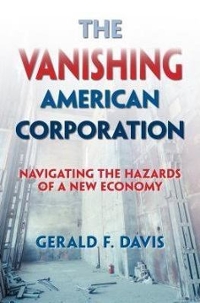I need to know how each answer was arrived at step by step
20. Assume the Black-Scholes framework. Consider a stock, and a European call option and a European put option on the stock. The current stock price, call price, and put price are 45.00, 4.45, and 1.90, respectively. Investor A purchases two calls and one put. Investor B purchases two calls and writes three puts. The current elasticity of Investor A's portfolio is 5.0. The current delta of Investor B's portfolio is 3.4. Calculate the current put-option elasticity. (A) -0.55 (B) -1.15 (C) -8.64 (D) -13.03 (E) -27.24 21-24. DELETED 25. Consider a chooser option (also known as an as-you-like-it option) on a nondividend-paying stock. At time 1, its holder will choose whether it becomes a European call option or a European put option, each of which will expire at time 3 with a strike price of $100. The chooser option price is $20 at time f = 0. The stock price is $95 at time = 0. Let C(7) denote the price of a European call option at time f = 0 on the stock expiring at time 7, 7 > 0, with a strike price of $100. You are given: (i) The risk-free interest rate is 0. (ii) c(1) =$4. Determine C(3). (A) $9 (B) $11 (C) $13 (D) $15 (E) $1726. Consider European and American options on a nondividend-paying stock. You are given: (i) All options have the same strike price of 100. (ii) All options expire in six months. (iii) The continuously compounded risk-free interest rate is 10%. You are interested in the graph for the price of an option as a function of the current stock price. In each of the following four charts I-IV, the horizontal axis, S, represents the current stock price, and the vertical axis, , represents the price of an option. II. 100 = 95.12 - S - 100 7 = -95.12 100 95.12 III. IV. 100 95,12 7 100 - S 7 95. 12 M S 100 95.12 Match the option with the shaded region in which its graph lies. If there are two or more possibilities, choose the chart with the smallest shaded region. IFM-01-18 Page 49 of 105 European Call American Call European Put American Put (A) III III (B) II IV III (C) II III III (D) II II IV III (E) II II IV IV31. You compute the current delta for a 50-60 bull spread with the following information: (i) The continuously compounded risk-free rate is 5%. (ii) The underlying stock pays no dividends. (iii) The current stock price is $50 per share. (iv) The stock's volatility is 20%. (iv) The time to expiration is 3 months. How much does delta change after 1 month, if the stock price does not change? A) increases by 0.04 B) increases by 0.02 (C) does not change, within rounding to 0.01 (D) decreases by 0.02 (E) decreases by 0.04 32. DELETED IFM-01-18 Page 50 of 105 33. You own one share of a nondividend-paying stock. Because you worry that its price may drop over the next year, you decide to employ a rolling insurance strategy, which entails obtaining one 3-month European put option on the stock every three months, with the first one being bought immediately. You are given: (i) The continuously compounded risk-free interest rate is 8%. (ii) The stock's volatility is 30%. (iii) The current stock price is 45. (iv) The strike price for each option is 90% of the then-current stock price. Your broker will sell you the four options but will charge you for their total cost now. Under the Black-Scholes framework, how much do you now pay your broker? (A) 1.59 (B) 2.24 (C) 2.86 (D) .48 (E) 3.6140. The following four charts are profit diagrams for four option strategies: Bull Spread, Collar, Straddle, and Strangle. Each strategy is constructed with the purchase or sale of two 1-year European options. Portfolio I Portfolio II Profit Proin Stock Price Stock Price Portfolio III Portfolio IV Profit Profit Stock Price Stock Price Match the charts with the option strategies. Bull Spread Straddle Strangle Collar (A) II III IV (B) I III II AI (C) III IV I II (D) IV II III I (E) IV III II I41. Assume the Black-Scholes framework. Consider a 1-year European contingent claim on a stock. You are given: (i) The time-0 stock price is 45. (ii) The stock's volatility is 25%. (iii) The stock pays dividends continuously at a rate proportional to its price. The dividend yield is 3%. iv) The continuously compounded risk-free interest rate is 7%. (v) The time-1 payoff of the contingent claim is as follows: payoff 42 S(1) 42 Calculate the time-0 contingent-claim elasticity. (A) 0.24 B) 0.29 (C) 0.34 (D) 0.39 (E) 0.4442. Prices for 6-month 60-strike European up-and-out call options on a stock S are available. Below is a table of option prices with respect to various H, the level of the barrier. Here, S(0) = 50. H Price of up-and-out call 60 70 0.1294 80 0.7583 90 1.6616 4.0861 Consider a special 6-month 60-strike European "knock-in, partial knock-out" call option that knocks in at #1 = 70, and "partially" knocks out at H2 = 80. The strike price of the option is 60. The following table summarizes the payoff at the exercise date: HI Hit HI Not Hit H2 Not Hit H2 Hit 0 2 x max [S(0.5) - 60, 0] max [S(0.5) - 60, 0] Calculate the price of the option. (A) 0.6289 (B) 1.3872 C) 2.1455 (D) 4.5856 (E) It cannot be determined from the information given above












